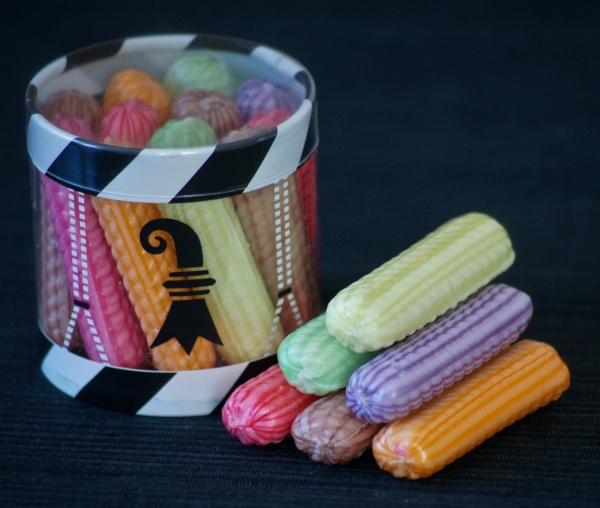Facts About Mässmogge
Mässmogge are delightful, thumb-sized candies filled with hazelnut praline, a beloved seasonal treat in Basel, Switzerland, particularly popular during the autumn fair. The name "Mässmogge" originates from Basel German, with "Mäss-" signifying the fair (Messe) and "Mogge" deriving from the Middle High German word "Mocken" meaning "big piece" or "lump."
Each candy measures approximately 5.5 centimeters in length and 2 centimeters in width, weighing around 14 grams. They boast a colorful, striped sugar shell in various flavors that correspond to the shell's color, encasing a rich hazelnut praline center. An alternative variant, known as Glasmogge, is a peppermint-flavored sugar candy without the hazelnut filling.
Crafting Mässmogge is a labor-intensive process. It involves cooking the sugar candy mass, adding specific colors and flavors, layering it with hazelnut praline, and then shaping the candies. Each year, about one million Mässmogge are produced, with 70% containing the hazelnut filling. They are primarily sold at the Basel autumn fair and by market traders throughout Switzerland.
The history of Mässmogge dates back to the 1860s when French confectioners first introduced candy canes at Basel fairs. The modern hazelnut-filled version was crafted by confectioner Leonz Goldinger around 1900. While many confectioners once produced Mässmogge, today only one company, Sweet Basel AG, continues this tradition due to the high costs of production.

 Germany
Germany